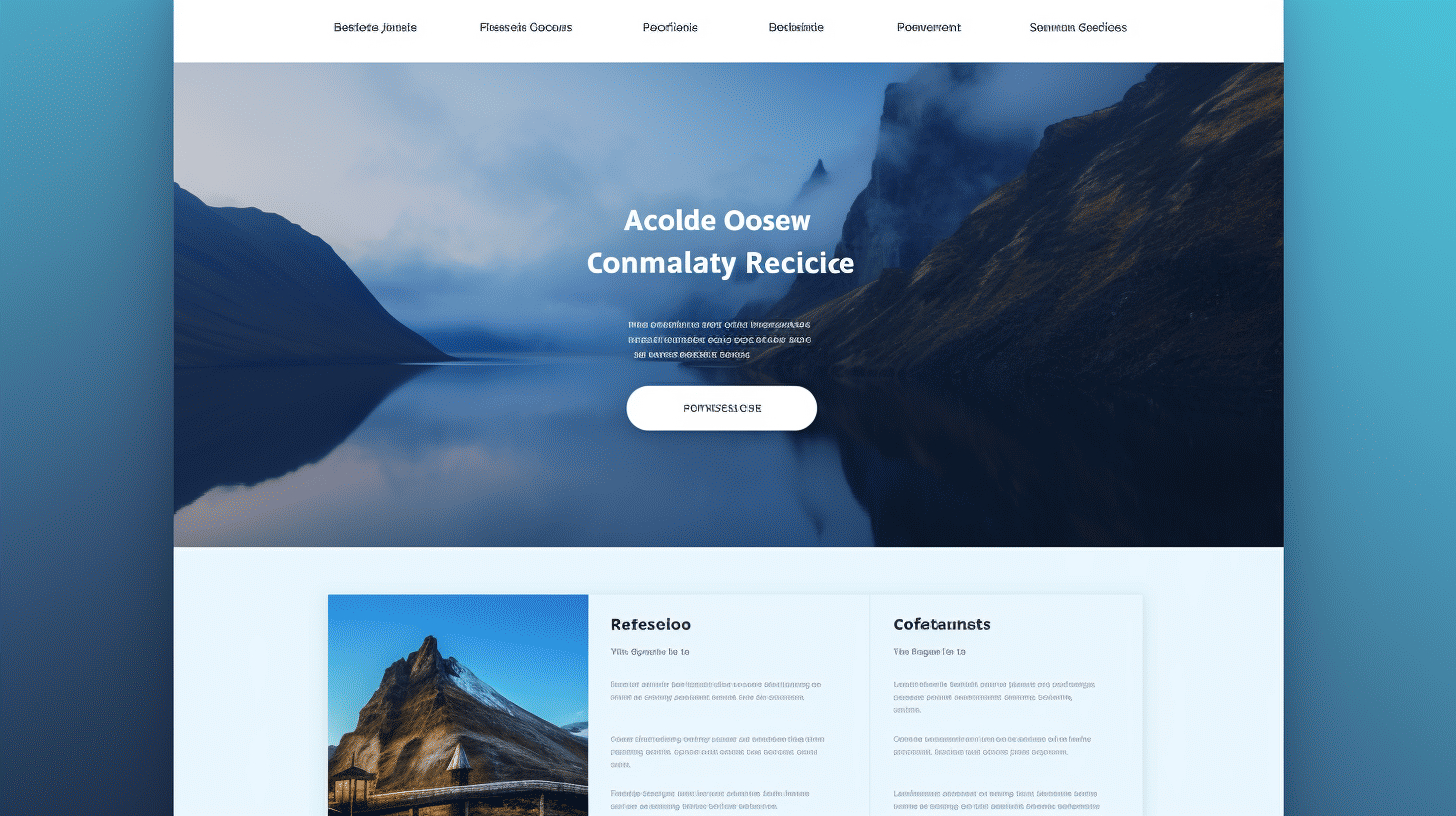在當今的數位環境中,擁有強大的線上影響力對於企業和個人來說都至關重要。實現此目的的方法之一是針對搜尋引擎優化您的網站。搜尋引擎優化 (SEO) 是提高您的網站在搜尋引擎結果頁面 (SERP) 中的可見度和排名的做法。
由於其用戶友好的介面和廣泛的外掛程式和主題,WordPress 長期以來一直是網站開發的熱門選擇。然而,最近,WordPress 開發領域出現了一種新趨勢——無頭 WordPress。
Headless WordPress 是一種現代方法,它將 WordPress 網站的前端和後端分開。它允許開發人員使用 WordPress 作為內容管理系統 (CMS),同時利用其他技術來建立高度互動和動態的前端體驗。這種架構方法提供了許多好處,但在 SEO 方面也帶來了獨特的挑戰。
對於任何想要利用無頭 WordPress 的強大功能同時保持強大線上影響力的人來說,理解並有效應對這些挑戰至關重要。在本文中,我們將探索無頭 WordPress 的世界,並提供提高無頭 WordPress 網站搜尋排名的策略。所以,喝杯咖啡,讓我們開始吧! ☕️
了解無頭 WordPress
在內容管理系統 (CMS) 領域,WordPress 長期以來一直是建立網站和部落格的熱門選擇。然而,隨著無頭架構的興起,出現了一種使用 WordPress 的新方式,為開發人員和內容創作者提供了令人興奮的可能性。 🌟
定義
那麼,無頭 WordPress 到底是什麼呢?簡而言之,它將網站的後端(「無頭」部分)與前端(「頭」)分開。傳統上,WordPress 是一個一體化解決方案,可處理網站的內容管理和展示方面。但使用無頭 WordPress,內容管理系統僅用於管理和組織內容,而前端則由單獨的技術堆疊處理。
架構概述
為了更好地理解無頭 WordPress 的工作原理,讓我們仔細看看它的架構。 🏰
- 後端:WordPress CMS 🖥️
- API:溝通橋樑 🌉
- 前端:獨立的技術堆疊 💻
無頭 WordPress 的核心是熟悉的 WordPress CMS。內容創作者可以在這裡使用熟悉的使用者介面來建立、編輯和組織他們的內容。然後將該內容儲存在資料庫中。
API,即應用程式介面,是後端和前端之間的溝通橋樑。它允許開發人員從 WordPress 資料庫獲取內容並將其提供給前端。
與前端與 CMS 緊密耦合的傳統 WordPress 設定不同,無頭 WordPress 允許靈活地選擇前端技術堆疊。這意味著開發人員可以使用 React、Angular 或 Vue.js 等現代框架來建立使用者介面並處理內容的呈現。
透過將後端與前端分離,無頭 WordPress 開啟了一個全新的可能性世界。開發人員可以建立動態、互動的使用者介面,不受 WordPress 主題系統的限制。內容創作者可以專注於創建和管理內容,而開發人員可以創造獨特且引人入勝的使用者體驗。 💡
為什麼要用 Headless WordPress?
現在我們對無頭 WordPress 是什麼以及它如何運作有了基本的了解,您可能想知道為什麼有人會選擇無頭 WordPress。嗯,有幾個令人信服的理由:
- 靈活性:使用無頭 WordPress,您可以自由地為您的專案選擇最合適的前端技術堆疊。這使得設計和開發獨特的使用者體驗具有更大的靈活性。
- 表現:透過將前端與後端分離,無頭 WordPress 可以提供更快的頁面載入時間和更高的效能。這對於流量大或功能複雜的網站尤其重要。
- 可擴展性:無頭架構使您的網站能夠無縫擴展。隨著流量的成長,您可以輕鬆添加更多伺服器來處理負載,而不會影響前端的效能。
- 面向未來:透過採用無頭 WordPress,您可以利用前端開發領域的最新技術和趨勢來確保您的網站面向未來。您不受 WordPress 主題限制的束縛,可以適應不斷變化的用戶期望。
因此,如果您希望將 WordPress 網站提升到一個新的水平,那麼無頭 WordPress 可能是您一直在尋找的解決方案。探索各種可能性並釋放您的創造力! 🚀
若想詳細了解為何應使用無頭 WordPress,請查看我們的 綜合指南.
SEO與無頭WordPress
在當今的數位世界中,強大的線上影響力對於任何企業的成功都至關重要。當談到優化您的網站以便在搜尋引擎結果中獲得更高的排名時,搜尋引擎優化 (SEO) 起著重要作用。但 Headless WordPress 網站又如何呢?如何有效管理 Headless WordPress 設定的 SEO?讓我們深入探討 SEO 對於 Headless WordPress 的重要性及其所帶來的挑戰。
SEO 對 Headless WordPress 的重要性
說到內容管理系統,WordPress 是許多網站所有者的熱門選擇。其用戶友好的介面和豐富的插件生態系統使其成為建立和管理網站的首選平台。但為什麼要選擇 Headless WordPress?
Headless WordPress 設定將前端和後端分離,因此可以更靈活地控制網站的設計和效能。使用傳統的 WordPress,前端和後端緊密整合,限制了自訂選項。然而,Headless WordPress 允許開發人員使用 React 或 Angular 等現代技術來建立前端,從而創建快速、高效能的網站。
現在,讓我們來看看為什麼 SEO 對你的 Headless WordPress 網站很重要:
- 更好的有機可見性: 優化良好的網站在搜尋引擎結果中排名較高,從而提高了知名度和自然流量。
- 改進的使用者體驗: 優化頁面載入時間、行動友善設計和輕鬆導航等 SEO 實踐不僅對搜尋引擎至關重要,而且有助於增強用戶體驗。
- 增加線上權限: 當您的網站在搜尋結果中排名較高時,它會在您的領域中建立信譽和權威,從而提升您品牌的聲譽。
- 目標流量: SEO 使您能夠針對特定關鍵字優化您的網站並瞄準您的理想受眾,從而增加轉換和銷售的機會。
Headless WordPress 的 SEO 管理挑戰
雖然 Headless WordPress 提供了靈活性和控制力,但在管理 SEO 時也帶來了一些獨特的挑戰。以下是您可能會遇到的一些障礙:
- 缺少SEO插件: 傳統的 WordPress 網站有各種各樣的 SEO 外掛程式可用,例如 WordPress 的 SEO 插件 例如 SEOPress、Yoast 和 Rank Math。但是,由於 Headless WordPress 網站將前端和後端分離,使用這些外掛變得更加複雜,甚至根本不可能。
- 技術複雜性: 建立 Headless WordPress 網站需要技術專長。設定 API 連接、處理伺服器端渲染和優化程式碼等方面對於 SEO 至關重要。如果沒有適當的技術知識,有效實施 SEO 最佳實踐可能會很困難。
- 內容優化: 在 Headless WordPress 設定中,內容通常與前端分開儲存和管理。這種分離可能會使 SEO 內容優化變得困難,因為您需要確保不同平台上元資料、關鍵字和其他頁面因素的一致性。
儘管有這些挑戰,只要採用正確的方法和專業知識,管理 Headless WordPress 網站的 SEO 是完全可以實現的。透過了解獨特的要求並實施 SEO 最佳實踐,您可以確保您的 Headless WordPress 網站吸引自然流量、增強用戶體驗並推動業務成長。
請記住,SEO 是一個持續的過程,需要持續的監控和最佳化。隨時了解最新的 SEO 趨勢,定期進行審核,並據此調整您的策略以保持競爭優勢。
提高搜尋排名的策略
在當今的數位環境中,擁有強大的線上影響力對於各種規模的企業來說都至關重要。成功實現線上形象的關鍵因素之一是搜尋引擎可見性。當您的網站在搜尋引擎結果中排名較高時,您吸引自然流量和潛在客戶的機會就會增加。那麼,如何才能提高您的搜尋排名並提升您的線上知名度呢?
以下六種策略可協助您優化網站並提升搜尋引擎排名:
網站地圖和索引
🗺️ 網站地圖涉及為您的網站創建搜尋引擎可以輕鬆理解的導航結構。它可以幫助搜尋引擎機器人有效地抓取和索引您的網頁。考慮使用網站地圖為搜尋引擎提供您網站層次結構的清晰路線圖,並使他們更容易發現和索引您的內容。
關鍵字優化
🔍 關鍵字優化是進行徹底研究以確定目標受眾在網路上搜尋時使用的關鍵字的過程。將這些目標關鍵字合併到您網站的內容、標題、元描述和 URL 中,可以讓您的網站在相關搜尋結果中排名更高。
元資料管理
💡 元資料是指搜尋引擎用來了解網頁內容的資訊。透過使用相關關鍵字和引人注目的資訊來優化您的元標題和元描述,您可以增加吸引搜尋引擎用戶點擊的可能性。不要忘記讓你的元描述更具吸引力,因為它們可以作為搜尋結果中你的網頁的「迷你廣告」。
連結策略
🔗 建立強大且多樣化的連結策略對於提高您的搜尋排名至關重要。尋找機會從信譽良好且權威的網站獲取反向鏈接,因為搜尋引擎將這些鏈接視為您網站可信度和相關性的指標。此外,您自己網站內的內部連結可以幫助搜尋引擎了解您的內容的結構和層次。
載入速度提升
⏱️ 載入速度對使用者體驗和搜尋引擎排名至關重要。加載緩慢的網站會阻止用戶,從而導致更高的跳出率並可能影響您的搜尋排名。透過壓縮圖片、最小化 HTTP 請求和利用瀏覽器快取技術來優化網站的載入速度。
行動最佳化
📱 行動優化不再是可選的,而是一種必需品。隨著越來越多的用戶透過行動裝置上網,搜尋引擎優先考慮提供無縫行動體驗的網站。確保您的網站響應迅速且適合行動設備,讓使用者可以在任何裝置上輕鬆存取和瀏覽您的網站。
請記住,提高搜尋排名是一個持續的過程,需要結合技術優化和以用戶為中心的策略。透過實施這些策略,您可以提高網站的知名度,吸引更多的自然流量,並最終擴大您的線上影響力。
在 Headless WordPress 上實施 SEO 策略
在當今的數位環境中,擁有強大的線上影響力對於任何企業或網站的成功至關重要。推動自然流量和提高搜尋引擎結果可見度的一個有效方法是實施 SEO 策略。當談到內容管理和網站開發時,WordPress 是許多人的熱門選擇。隨著無頭 WordPress(一種將前端和後端分開的解耦方法)的興起,實施 SEO 策略變得更加重要。在本文中,我們將探討可以在無頭 WordPress 網站上實施 SEO 策略的三個關鍵領域。
圖形使用者介面 (GUI) 調整
一個設計良好、使用者友善的網站不僅可以增強使用者體驗,而且在 SEO 中也發揮著重要作用。以下是您可以在無頭 WordPress 網站上進行的一些 GUI 調整,以優化搜尋引擎:
- SEO友善的URL:確保您的 URL 簡潔、描述性強且包含相關關鍵字。這有助於搜尋引擎了解您網頁的內容。
- 頁面標題和元描述:為您網站上的每個頁面製作獨特且引人注目的頁面標題和元描述。這些元素出現在搜尋引擎結果中,應該準確概括內容,同時吸引用戶點擊。
- 標題標籤:使用適當的標題標籤(H1、H2、H3 等)來建立您的內容。這有助於搜尋引擎了解您頁面上資訊的層次和重要性。
- 影像優化:使用描述性檔案名稱和添加替代文字來優化您的圖像。這提高了可訪問性並幫助搜尋引擎了解圖像的內容。
自訂編碼技術
在無頭 WordPress 網站上實施 SEO 策略時,自訂編碼技術可以提供額外的控制和靈活性。以下是一些可以考慮的技巧:
- 架構標記:實施架構標記可讓您向搜尋引擎提供結構化數據,幫助他們更好地理解您的內容。這可以帶來增強的搜尋引擎列表,例如豐富的摘要。
- 規範 URL:實作規範 URL 可確保搜尋引擎在存在多個版本時了解在搜尋結果中優先考慮頁面的哪個版本。這有助於防止重複內容問題並改善整體 SEO。
- XML 網站地圖:產生並提交 XML 網站地圖給搜尋引擎。這有助於搜尋引擎更有效地發現和索引您網站的頁面。
- 頁面速度優化:透過最小化程式碼、利用快取技術和優化圖像來優化網站的效能。更快的網站可以改善用戶體驗並對 SEO 產生積極影響。
API 與 SEO 工具集成
為了真正發揮無頭 WordPress 網站上 SEO 的強大功能,請考慮透過 API 與 SEO 工具整合。這使您可以自動執行各種 SEO 任務並獲得有價值的見解。以下是一些 API 整合的範例:
- 關鍵字研究:與關鍵字研究工具集成,以確定內容中相關的關鍵字和短語。
- 排名追蹤:連接排名追蹤工具來監控您的網站在特定關鍵字的搜尋引擎排名中的表現。
- 反向連結分析:與反向連結分析工具集成,以監控和分析您網站的反向連結配置文件,使您能夠識別連結建立機會並解決任何有害的反向連結。
- 現場審核:使用 API 整合執行定期網站審核,檢查技術 SEO 問題、斷開的連結以及其他可能影響您網站在搜尋結果中的可見性的因素。
透過在無頭 WordPress 網站上實施 SEO 策略,您可以提高網站的可見度、吸引自然流量,並最終提高您的線上形象。無論是進行 GUI 調整、利用自訂編碼技術還是與 SEO 工具集成,這些策略都可以幫助您在競爭激烈的線上環境中保持領先地位。在您的無頭 WordPress 網站上擁抱 SEO 的力量,並觀察您的排名飆升!
監控 SEO 效能
在監控 SEO 效能時,擁有正確的工具和策略至關重要。畢竟,你如何能改進那些無法衡量的東西呢?在本文中,我們將探討一些用於追蹤 SEO 表現的頂級工具以及如何有效地分析 SEO 報告。那麼讓我們深入研究並發現如何密切關注您的 SEO 工作! 💪
追蹤 SEO 性能的工具
追蹤您的 SEO 表現對於了解您的網站在搜尋引擎排名中的表現至關重要。幸運的是,有幾種強大的工具可以幫助您監控您的 SEO 工作。以下是一些值得考慮的熱門:
- 谷歌分析(Google Analytics): 谷歌的這個免費工具可以提供有關您網站表現的寶貴見解,包括自然搜尋流量、關鍵字排名、跳出率等。這是追蹤您的 SEO 工作的一個極好的起點。
- Google 搜尋控制台: Google 的另一個免費工具 Search Console 可讓您監控您的網站在搜尋引擎結果中的顯示方式。它提供有關抓取錯誤、索引狀態和搜尋查詢效能的數據,為您提供有價值的資訊以改善您的 SEO 策略。
- SEMrush: SEMrush 是一款綜合性的 SEO 工具,提供關鍵字研究、競爭對手分析、網站審核等功能。它可以幫助您發現優化網站的機會並追蹤您的進度。
- Moz Pro: Moz Pro 是一款受歡迎的 SEO 軟體,可提供數據驅動的見解來提高您的搜尋引擎排名。它提供關鍵字研究、連結分析、網站審核和排名追蹤等功能,使其成為監控 SEO 表現的有價值的工具。
這些工具提供一系列功能和定價計劃,因此您可以選擇最適合您需求和預算的工具。關鍵是要有一個工具,讓您可以追蹤重要的 SEO 指標並為您的網站優化做出數據驅動的決策。
分析SEO報告
一旦您設定了正確的工具來監控您的 SEO 效能,知道如何有效地分析報告就至關重要。以下提示可協助您理解數據:
- 關注關鍵指標: 確定與您的 SEO 目標相符的關鍵績效指標 (KPI),例如自然流量、關鍵字排名、轉換率或跳出率。密切注意這些指標來衡量你的 SEO 工作的有效性。
- 尋找趨勢: 不要只專注於單一數據點,而要尋找隨時間變化的趨勢。你的排名是上升了還是下降了?您的自然流量是在成長還是停滯不前?了解趨勢可以幫助您確定改進的領域並追蹤您的進度。
- 與競爭對手比較: 利用工具來分析競爭對手的 SEO 表現。將您網站的排名、流量和關鍵字與競爭對手進行比較,以獲得見解並發現機會。
- 根據洞察採取行動: 分析報告並確定需要改進的領域後,就必須採取行動。根據從數據中獲得的見解調整您的網站的內容、關鍵字策略或使用者體驗。
請記住,SEO 是一個持續的過程,定期監控您的表現是保持領先的關鍵。利用正確的工具和分析方法,您將能夠做出數據驅動的決策並不斷優化您的網站以獲得更好的搜尋引擎可見性。
現在您已經掌握了追蹤和分析 SEO 表現的知識,是時候將其付諸實踐了。因此,開始利用這些工具並獲得有價值的見解,以提高您網站的搜尋引擎排名。快樂監控! 📈
結論
總而言之,提高無頭 WordPress 網站的搜尋排名對於最大限度地提高線上可見性和吸引更多自然流量至關重要。透過實施有效的 SEO 策略,例如網站映射、關鍵字優化、元資料管理、連結策略、載入速度改進和行動優化,您可以提高網站在搜尋引擎結果中的表現。
然而,由於前端和後端的分離,對無頭 WordPress 網站進行 SEO 優化可能會很困難。它需要調整圖形使用者介面、自訂編碼技術以及透過 API 與 SEO 工具的整合。
要監控您的 SEO 工作的效果,您可以使用追蹤 SEO 效果和分析 SEO 報告的工具。這些見解將幫助您評估策略的有效性並做出必要的調整。
Managed-WP™ 是一個高級託管 WordPress 雲端託管平台,它提供了簡化基礎設施管理的理想解決方案,並為優化無頭 WordPress 網站的 SEO 提供了專家支援。透過 Managed-WP,您可以專注於創造出色的數位體驗,而將技術方面的問題交給專家。
欲了解有關 Managed-WP 的更多資訊以及它如何改善無頭 WordPress 網站的 SEO,請訪問 管理-wp.com。立即開始使用 Managed-WP 最大化您的搜尋排名並提升您的線上形象。
常見問題解答
- 什麼是無頭 WordPress 以及它如何影響 SEO?
Headless WordPress 是將 WordPress 網站的前端和後端分開的設定。它透過加快頁面速度、提高可擴展性和改善用戶體驗來影響 SEO,進而對搜尋排名產生積極影響。
- 傳統的 SEO 實踐適用於無頭 WordPress 網站嗎?
是的,傳統的 SEO 實踐(例如關鍵字研究、頁面優化和反向連結建立)仍然適用於無頭 WordPress 網站。但是,可能需要額外考慮 API 整合、動態渲染和最佳化 JSON-LD 架構標記。
- 哪個 SEO 外掛適合無頭 WordPress?
對於無頭 WordPress,仍然可以使用流行的 SEO 插件,如 Yoast SEO、All in One SEO Pack 和 Rank Math。但是,某些功能(例如 XML 網站地圖和元標記)可能需要根據無頭實作進行不同的管理。
- 有哪些策略可以提高無頭 WordPress 網站的搜尋排名?
為了提高無頭 WordPress 網站上的搜尋排名,請專注於優化頁面載入速度、正確實施結構化資料、創建 SEO 友善的 URL、使用適當的標題標籤以及定期監控和分析網站效能。
- 無頭 WordPress 是否會影響行動 SEO?
Headless WordPress 可以對行動 SEO 產生積極影響,因為它可以加快頁面載入時間並優化用戶體驗,這兩者都是行動搜尋的重要排名因素。然而,正確的實施和優化對於確保跨裝置的無縫性能至關重要。



















